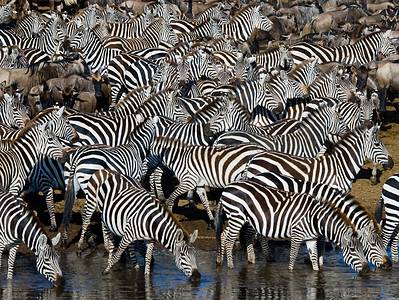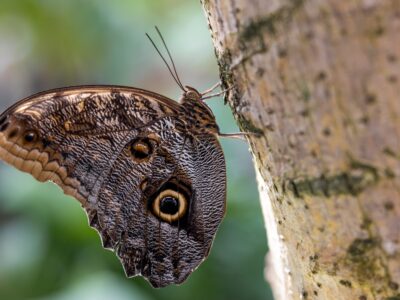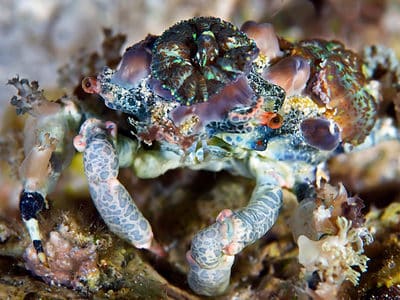Camouflage is defined as a defense mechanism or tactic that animals use to disguise themselves by blending in with their surroundings. Animals use camouflage to help them survive by hiding from either predators or prey.
What is Animal Camouflage?
Camouflage is used to hide an animal’s identity, location, and movement. Also called cryptic coloration, it helps animals merge into the background to escape predation or as a disguise while they lie in wait to sneak up on their prey. Cryptic coloration can either cause the animal to disappear into the background, or break up the outline of the animal’s body.
Several factors affect how an animal will camouflage itself. These include:
- Physical characteristics. An animal with fur will use different camouflage tactics than animals with scales or feathers. Feathers and scales can shed and be replaced quickly, but fur takes a longer time to grow back in. Some animals use their fur to camouflage based on the seasons. For example, arctic hares grow white fur for the winter to blend in with the snow.
- The behavior of the animal. The animal’s behavior changes how its camouflage works. The stripes on a zebra, for example, help the animal to blend into the herd. This makes it hard for predators to distinguish one individual from the group. Whereas a zebra standing alone might be easier to spot with its bold stripes.
- The behavior of the predators. How an animal’s predators behave also affects its camouflage tactics. For example, lions are the main predators of zebras. Lions are also color blind, which means zebras do not need to match the colors of the savanna and grasslands.

The stripes on a zebra help it to blend into the herd, making it hard for predators to distinguish one individual from the group.
©iStock.com/ANDREYGUDKOV
How Do Animals Create Camouflage?
Animals create camouflage through two primary methods:
- pigments
- physical structures
Some animals, such as the octopus, can change the color and pattern of their skin with microscopic pigments, known as biochromes. And other animals use microscopic physical structures that act like prisms. For example, polar bears have black skin and translucent fur. The fur reflects the sun and snow, making the bear appear white.
And some species, like the desert spider, use materials to avoid detection. The desert spider lives in burrows in the sand and attaches sand to their bodies to blend into the background.
What Are the Different Types of Animal Camouflage?
Key points:
- Many animal species have developed camouflage to avoid being attacked or to help them find food.
- An animal’s physical characteristics and behaviors determine its camouflage tactics.
- An animal’s environment is critical in what its camouflage will look like.
There are many different tactics animals use to camouflage. Let’s discuss some of the main ones below.
Background Matching
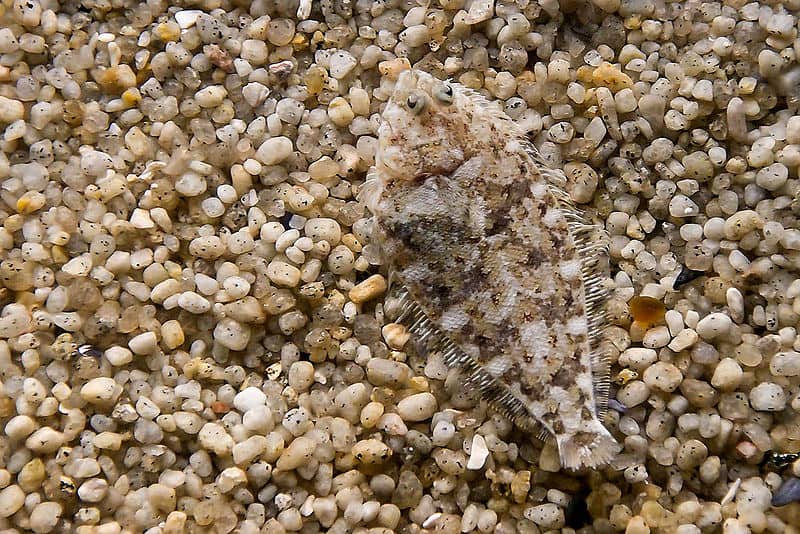
Some species like the flounder will use background matching to camouflage itself to avoid predators.
©Moondigger, CC BY-SA 2.5, via Wikimedia Commons – License
Background matching is one of the most common types of animal camouflage. It’s defined as a type of camouflage where the animal blends into its environment using color, form, or movement.
The most well-known species to use background matching is the chameleon, a species of lizard that can change its color to blend in with its background. Similarly, octopuses can rapidly change their skin color and patterns.
Other examples of background matching include deer, squirrels, and many other animals that have brown earth-tone colored fur that matches the brown of trees and soil. In the ocean, sharks and dolphins have a bluish-gray color to blend in while underwater. And flounder fish lie flat on the ocean floor, resembling the muddy or sandy ocean bottom.
Another form of background matching is when an animal or insect takes on the appearance of something in its environment. A predator may think that a katydid is a tree leaf, or that a walking stick insect is just an ordinary twig. A walking leaf, an insect native to Southeast Asia, will even sway from side to side as it walks to mimic the swaying of a leaf in the wind.
Self-Decoration

Some animals like the decorator crab hide by covering itself with materials they find in their environment.
©Aleksei Alekhin/Shutterstock.com
Another form of background matching is self-decoration. Some animals hide by using materials they find in their environment. They may decorate their bodies with items such as sand, pieces of shell, or twigs to conceal their bodies and match their backgrounds.
One example of self-decorating comes from the decorator crab. This small crab, found in the Southern Hemisphere, covers its shell with seaweed, sponges, and stones to hide from both predators and prey.
Cryptic Behavior

The potoo bird uses a combination of its coloring and its stillness to blend into the tree it is resting on.
©iStock.com/Natalie Rabinowitz
Crypsis, avoiding detection by blending into the background, involves both color-matching the surroundings and the behavior of the animal. For example, cryptic insects tend to move slowly and deliberately to avoid detection from predators.
Another animal that shows cryptic behavior is the pootoo owl found in the forests of Central and South America. This fascinating bird sits perfectly still during the day, perched on a stump or dead tree branch. With its coloring and still appearance, it looks as if it’s part of the tree.
Eliminating Shadow or Countershading
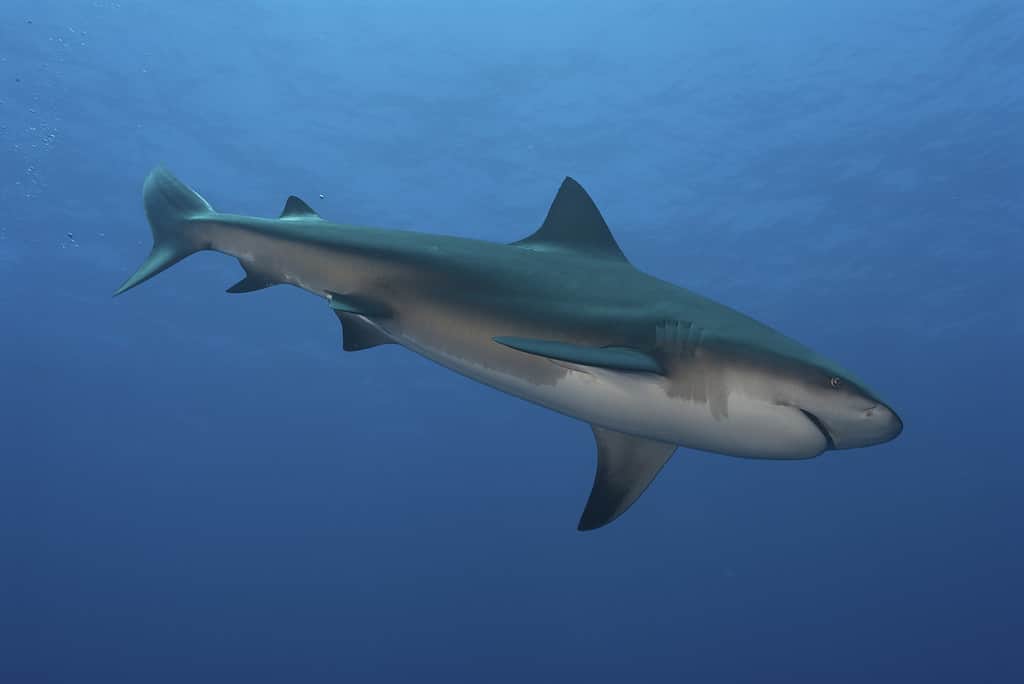
The bull shark blends into the ocean waters from above thanks to their darker coloring on top and from below because of its lighter underside.
©iStock.com/FionaAyerst
An animal’s shadow can give its identity and location away from predators. But, some animals have evolved the ability to hide their shadows. Horned lizards, for example, have very flat bodies which they press close to the ground. This allows them to blend into the open desert of their habitat, without detection.
Countershading, where an animal is lightly colored on its underside and darker on top, is used by sharks to blend into the ocean waters. When seen from below, they blend in with the light ocean waters, helping them hunt their prey undetected.
Disruptive Coloration
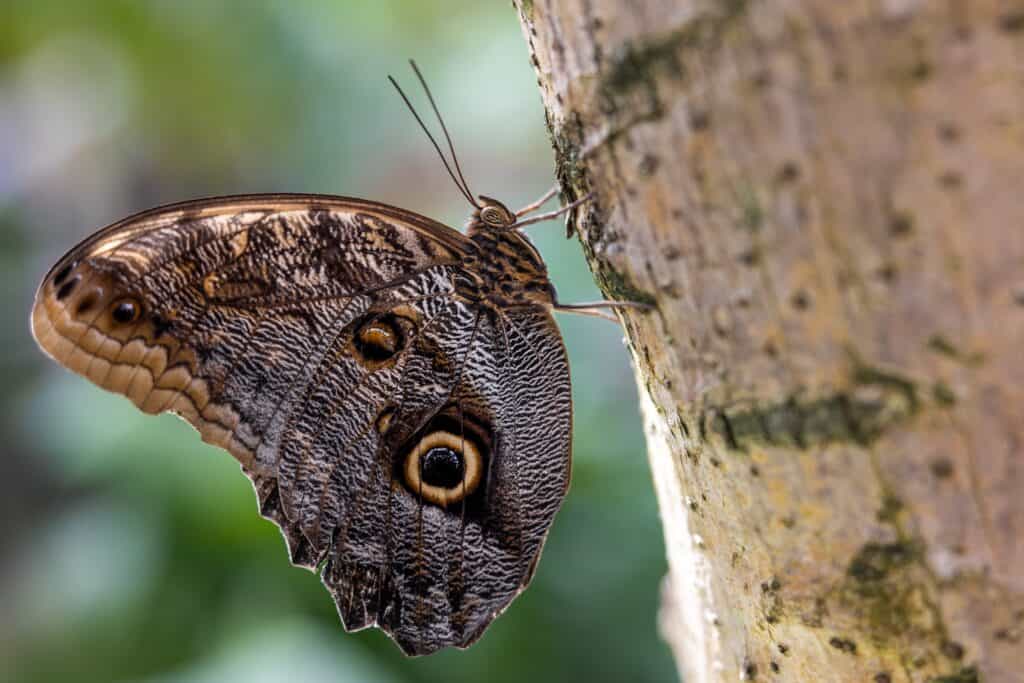
Owl butterflies have an eye-like pattern on their wings that cause predators to think they are looking at a larger animal.
©Roberto Dantoni/Shutterstock.com
Disruptive coloration is a tactic where animals use coloration patterns to disguise themselves. As we mentioned above, zebras’ stripes are a form of disruptive coloration. To a lion, a herd of zebras doesn’t look like individual animals; but one big striped mass.
This method works the same for a school of fish swimming together in the ocean. When the fish are in large schools, their stripes make them appear as one large mass to predators; rather than individual fish.
And finally, another example of disruptive coloration is when markings on an animal or insect cause a predator to think they are looking at something else entirely. Many butterflies, for example, have circular patterns on their upper wings called false eyespots. To a predator, such as a bird, these eyespots may look like actual eyes, making the bird think they are looking at a large animal, and not an insect.
Warning Coloration
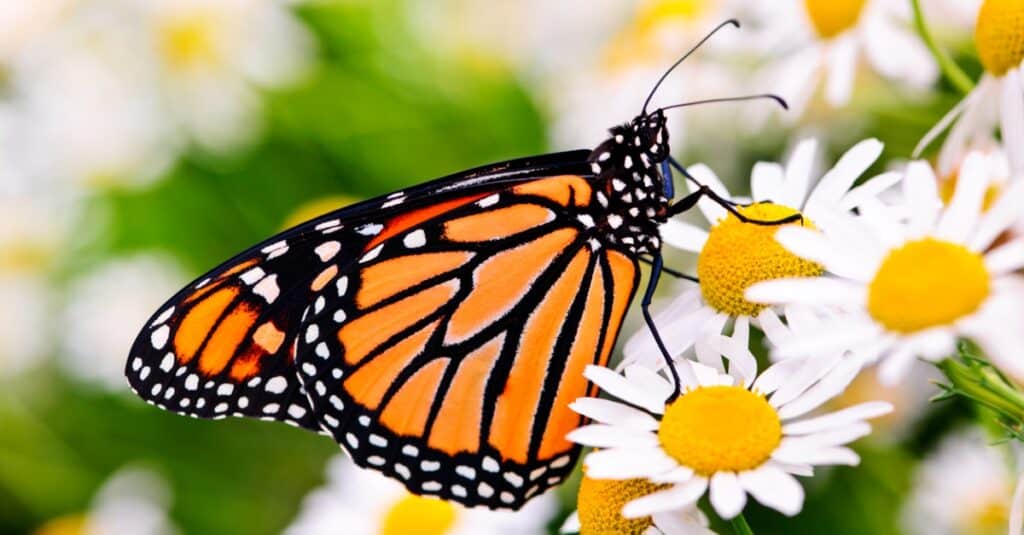
The bright colors of the monarch butterfly act as a warning to predators that they are poisonous to eat.
©iStock.com/Elenathewise
Warning coloration is a type of camouflage where an animal or insect draws attention to, rather than hiding, by using color. It’s also called aposematism. The warning colors of the animal signal to predators that the animal is toxic to eat.
An example of warning coloration can be found in the brightly colored monarch butterfly. Monarchs contain a toxin in their bodies from eating the milkweed plant when they are caterpillars. This toxin is poisonous to birds and will make a bird very sick if they eat the butterfly. The bright colors of the monarch will warn the bird from preying on monarch butterflies in the future.
Similarly, the bright yellow and black bands of bees warn predators that bees have stingers. And finally, the white and black stripes of a skunk warn predators to stay away to avoid skunk spray.
Olfactory Camouflage
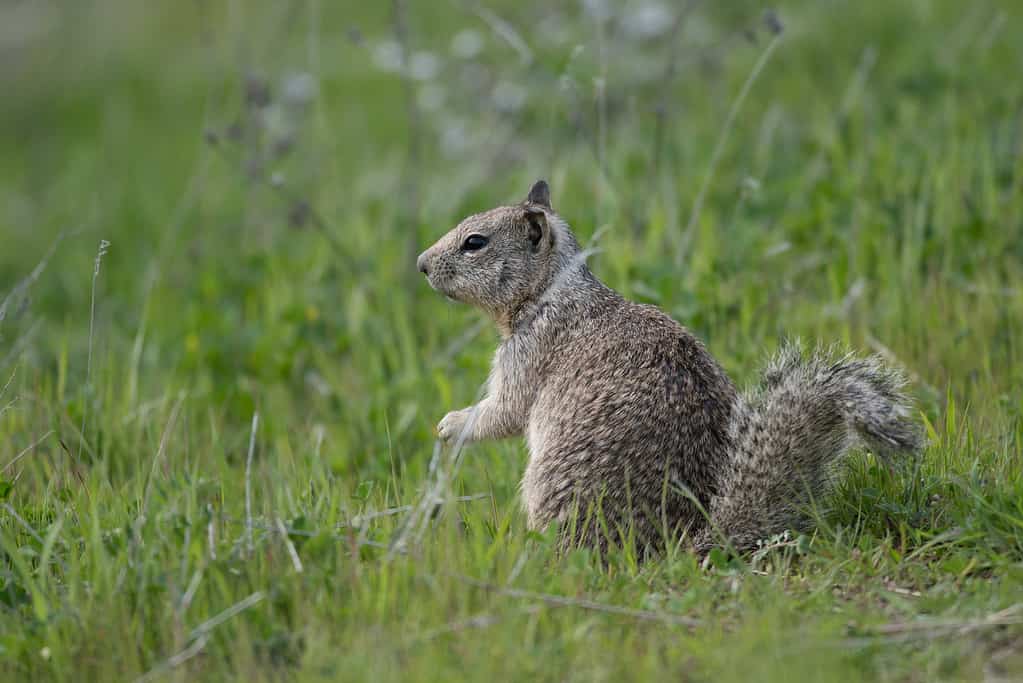
Some animals will use smell to hide from predators like California ground squirrels who use a rattlesnake paste to disguise its scent.
©iStock.com/zhuclear
A final tactic involves using smell rather than appearance to hide from predators. One animal that uses this tactic is the California ground squirrel. Its main predator is a rattlesnake. The squirrel will chew rattlesnake skins, turning them into a paste that the squirrel applies to its tail. Rattlesnakes, which hunt by smell and body heat, will be confused by the smell, and leave the squirrel alone.
Another example is the giant geometer moth caterpillar. These caterpillars not only look like twigs, but they also smell like twigs. When they munch on sticks, the odor goes into their exoskeleton, fooling predators to walk right on by them.

